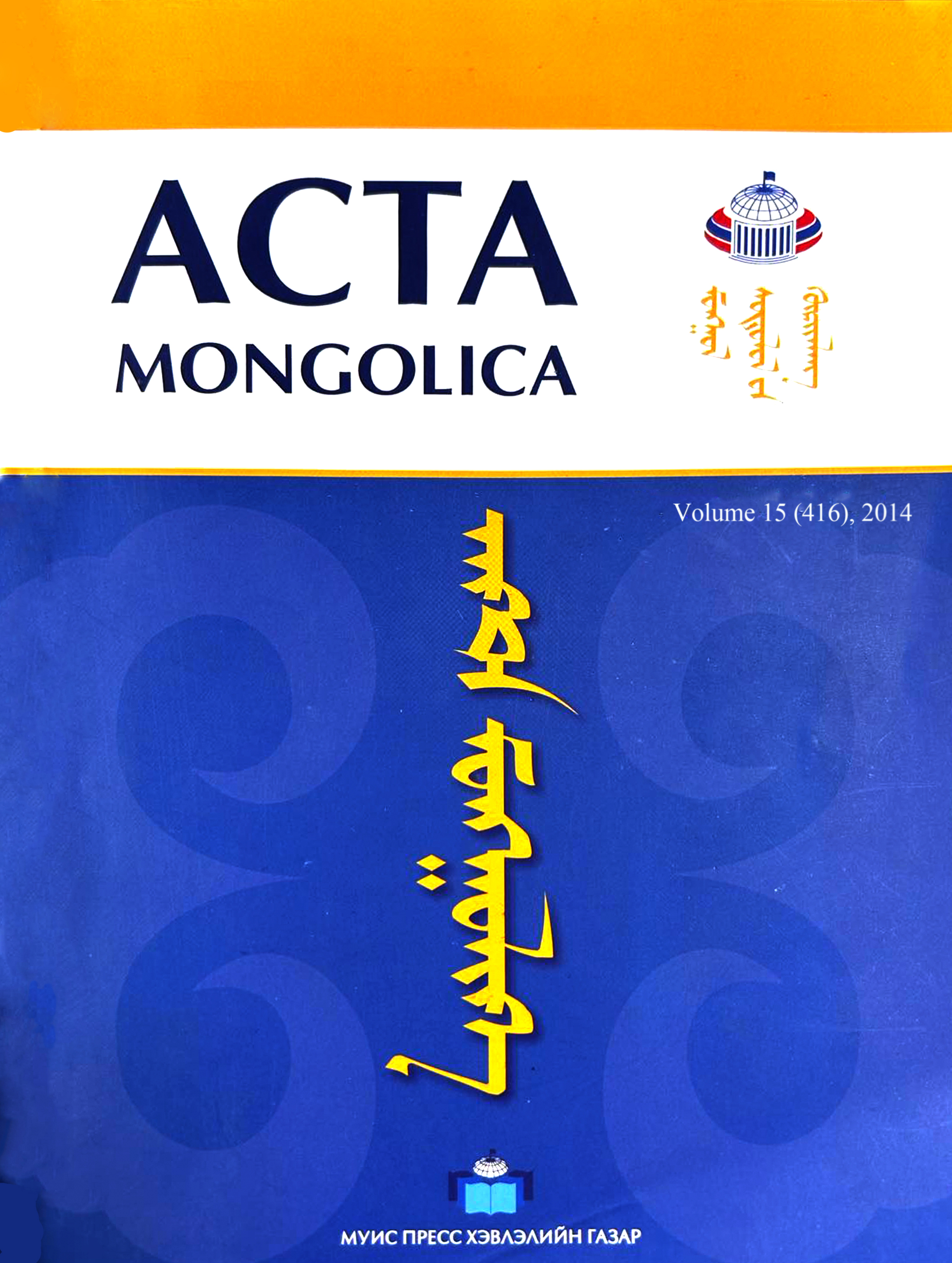The Metaphorical Conceptualization of Emotions in the Secret History of the Mongols
Main Article Content
Abstract
This article investigates the emotion metaphors in the Secret History of the Mongols (SHM: 1227). Specifically, it examines the linguistic metaphorical expressions for the concepts of emotions such as anger, happiness, and sadness within the CMT framework. The culture/language-specific elaborations of conceptual metaphors are only grounded on cultural salience at a specific level in the given culture. Moreover, the study contributes importantly to understanding the value of the nomadic culture and its association with metaphors manifesting the emotion concepts by nomads in the 13th century. The speakers of Mongolian differ widely from those in other cultures in their centuries-long experience of nomadic lifestyles, interacting with animals, and social and physical environments.
Article Details

This work is licensed under a Creative Commons Attribution-ShareAlike 4.0 International License.
References
Aksan M. 2006. “Metaphors of Anger: An outline of a Cultural Model”, http//www.google.com
Barcelona A. 1986. “On the Concept of Depression in American English: A Cognitive Approach,” Revita Ca naria de Estudios Ingleses, 12: 7-33.
Barcelona A. 2001. “On the Systematic Contrastive Analysis of Conceptual Metaphors: Case Studies and Pro posed Methodology”, http//www.google.com
Choijin Z. 2013. “The Metaphorical Conceptualization of Emotions in English and Mongolian” The Journal of Linguistic Science, 66: 301-322, Daegu: Korea.
Esenova O. 2013. Anger metaphors in the English language”, http:www.google.com
Kahn, P. 1984. “The Secret History of the Mongols”, http//www.google.com
Kövecses Z. 1986. Metaphors of Anger, Pride, and Love: A Lexical Approach to the Structure of Concepts, Amsterdam: John Benjamins.
Kövecses Z. 1990. Emotion Concepts, Berlin and New York: Springer-verlag.
Kövecses Z. 2000a. Metaphor and Emotion, Cambridge: Cambridge University Press.
Kövecses Z. 2002. Metaphor: A Practical Introduction, Oxford: Oxford University Press.
Kövecses Z. 2005. Metaphor in Culture, Cambridge: Cambridge University Press.
Lakoff G. and M. Johnson. 1980. Metaphors We Live By, Chicago: Chicago University Press.
Lakoff G. & Kövecses Z. 1987. “The Cognitive Model of Anger Inherent in American English”, In Holland, D. and N. Quinn (eds), Cultural models in Language and Thought, 195-221, New York: Cambridge University Press.
Matuski K. 1995. Metaphors of anger in Japanese. In J. Taylor and R. E. Maclaury (Eds), Language and cognitive construal of the world (pp. 137-151). Berlin: Mouton de Gruyter.
Nacey S. 2009. Introduction to the Metaphor Identification Procedure (MIP), http://www.slideserve.com
Oberfalzerova A. 2006. Metaphors and Nomads, Ph.D. dissertation, Charles University Press.
Rachewiltz I. 2004. “The Secret History of the Mongols”, A Mongolian Epic chronicle of the thirteenth century, http://www.google.com
Song B. 2003. Emotion Metaphors in Korean, PhD dissertation, Ball State University at Muncie Indiana.
Yu N. 1984. “The Contemporary Theory of Metaphor: A perspective from Chinese”, http://www.google.com Mongolian
MONGOLIIN NUUTS TOVHCOO,. 2011, Ulaanbaatar, Munkhiin useg.
Bat-Ireedui J. 2009. Mongol helnii horshoo bolon davtmal ug hellegiin san, Ulaanbaatar: “ZUV ZAM”books.
Purev-Ochir B. 2007. Mongol helnii butets, utga, uureg, hereglee, Ulaanbaatar:MUBIS.

